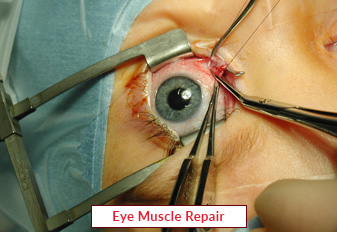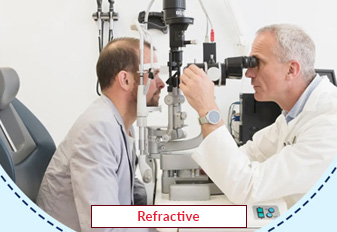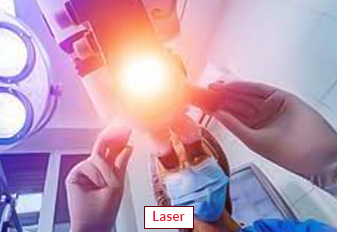Eye Muscle Repair Surgery

Eye muscle repair, also known as strabismus surgery, is a surgical procedure that is used to correct misaligned eyes. The procedure involves adjusting the muscles that control the movement of the eyes, with the aim of improving eye alignment and reducing double vision.
Eye muscle repair is typically performed as an outpatient procedure under local anesthesia, which means that the patient can go home on the same day. Recovery time varies depending on the extent of the surgery, but most patients can return to normal activities within a few days to a week after the procedure. It is important to choose an experienced ophthalmologist to ensure a successful outcome.
About Eye Muscle Repair
Eye muscle repair, also known as strabismus surgery, is a procedure to correct misaligned eyes caused by weak or overactive eye muscles. In India, there are several hospitals and clinics that offer eye muscle repair surgery, performed by experienced ophthalmologists.
The surgery is usually performed under local or general anesthesia and involves making a small incision in the eye to access the eye muscles. The surgeon then adjusts the muscles' tension to align the eyes correctly, and the incision is closed with sutures.
The cost of eye muscle repair surgery in India may vary depending on the hospital and the surgeon's expertise. Still, it is generally more affordable than in many other countries. Patients can expect high-quality care, with modern facilities and advanced technologies being used to ensure a successful outcome.
Procedure of Eye Muscle Repair
Eye muscle repair, also known as strabismus surgery, is a procedure that aims to correct the misalignment of the eyes caused by weak or overactive eye muscles. The procedure is typically performed under local or general anesthesia and takes about an hour to complete.
During the surgery, the surgeon makes a small incision in the conjunctiva, the clear tissue that covers the white part of the eye. The muscles that control the movement of the eyes are then identified and adjusted to improve their alignment. This can be achieved by either weakening or strengthening the muscles, depending on the type of strabismus and the patient's individual needs.
The surgeon may use several techniques to adjust the muscle tension, such as reattaching muscles to a different location, tightening or loosening the muscle, or shortening or lengthening the muscle. The surgeon may also use adjustable sutures to fine-tune the muscle alignment during the procedure.
After the surgery, the patient may experience some discomfort and swelling around the eye, which can be managed with pain medication and cold compresses. It is essential to follow the surgeon's post-operative instructions carefully to ensure a successful recovery.
In most cases, patients can return to their normal activities within a week or two after the surgery. Follow-up appointments with the surgeon are necessary to monitor the healing process and ensure the eyes are properly aligned.
Require Assistance?
Get A Quick Callback From Our Healthcare Experts






